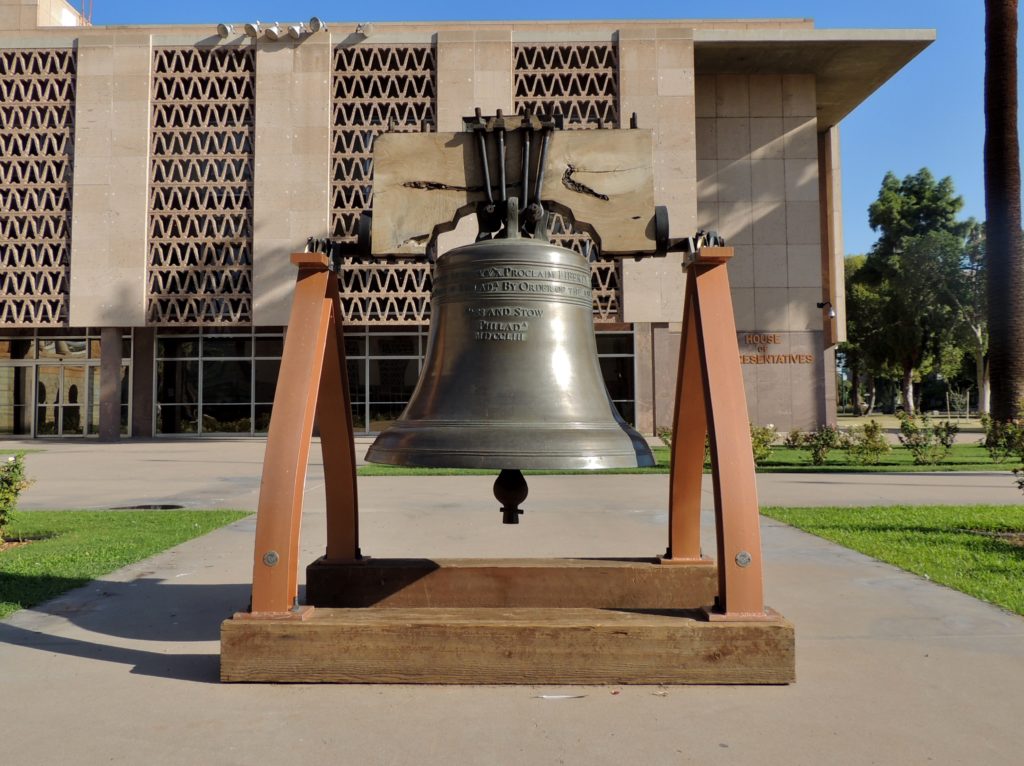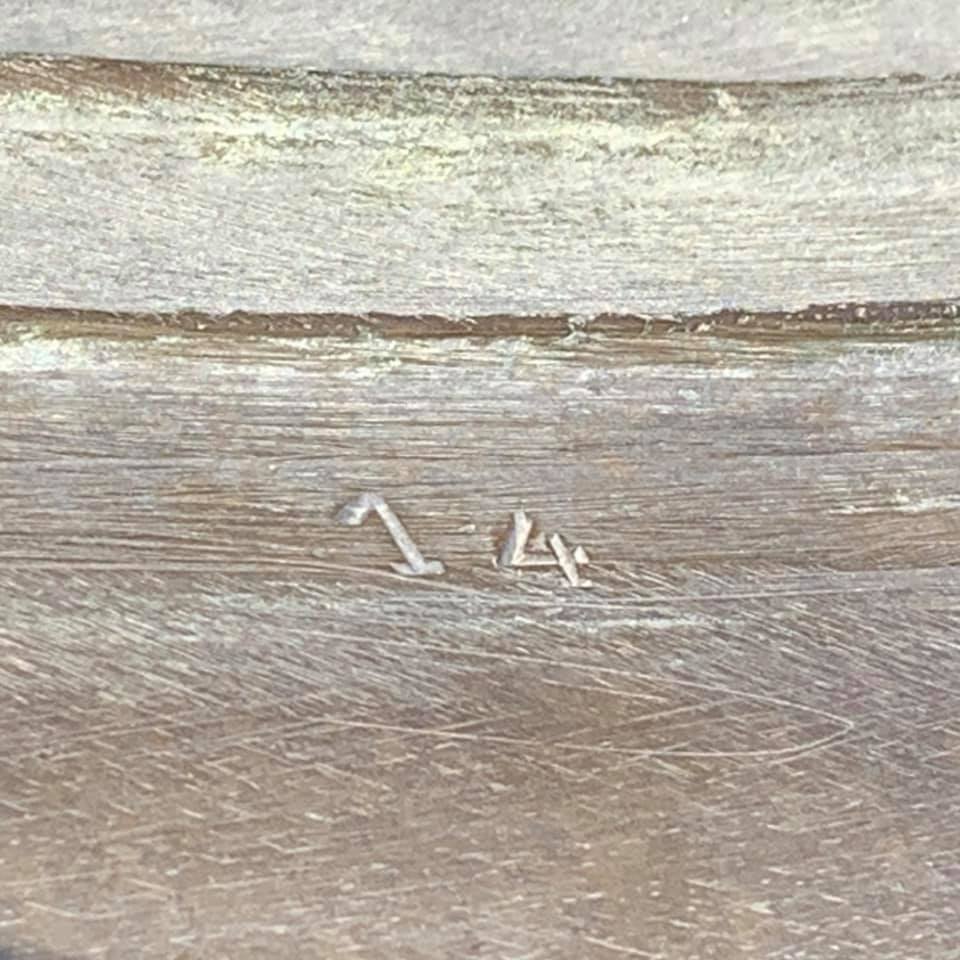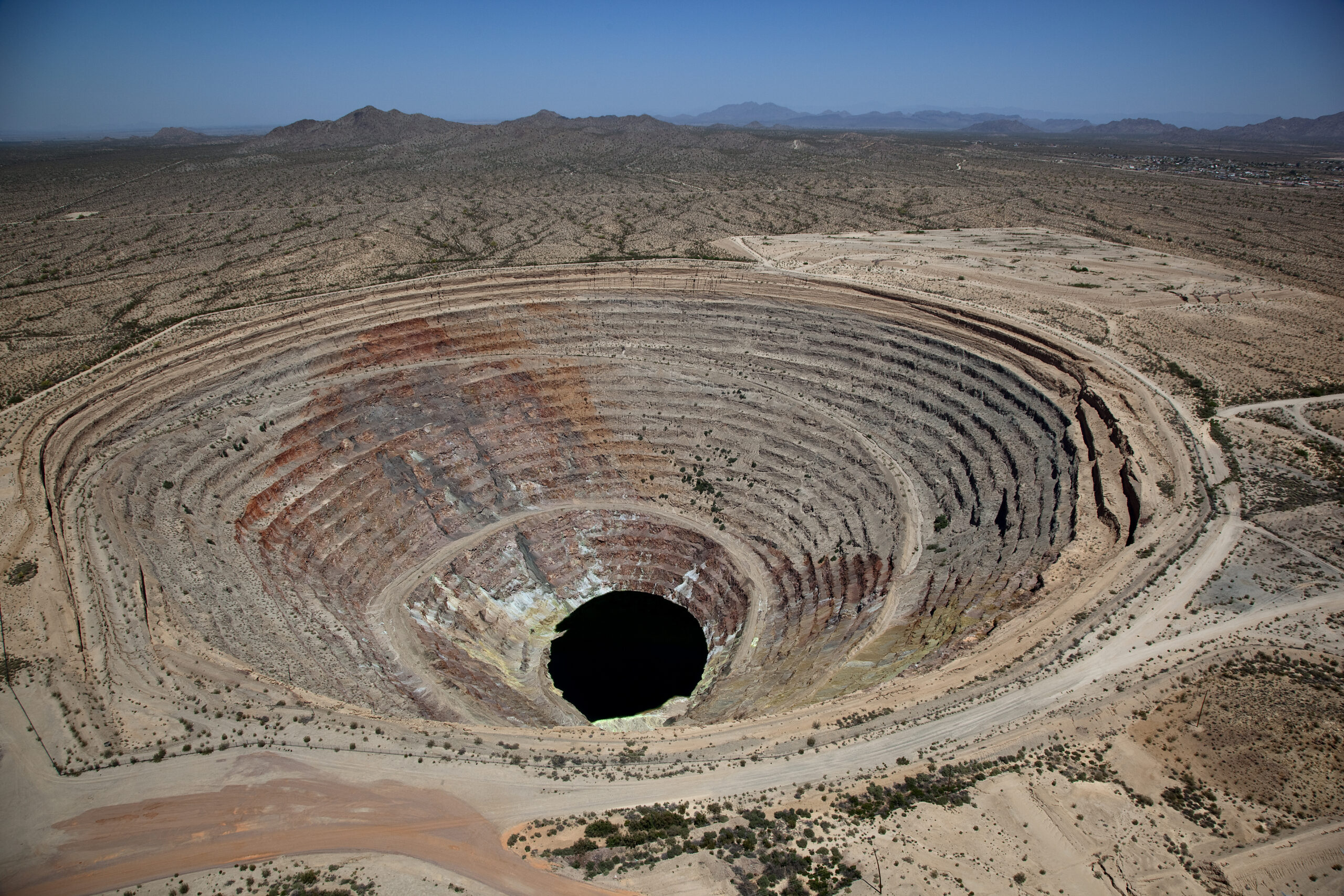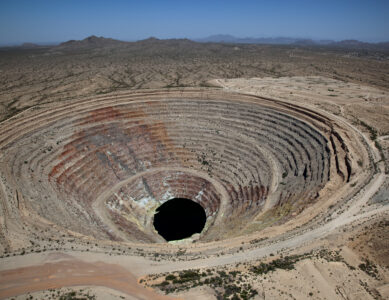Everywhere and nowhere
Copper. Of the things we don’t care about, it’s one of the most important. The most precious of the non-precious metals, a thin copper thread has held the American fabric together for millennia.
Some 7,000 years ago, ancient Americans dug pits by hand and mined copper along an isolated peninsula jutting into a massive lake. While the vast majority of the world’s copper is mined by extracting small bits of the metal from rock and sediment, this mother lode, formed a billion years ago, was pure copper. Fashioned into fishhooks, jewelry and tools, these goods were widely traded across North America. Subsequent generations continued to mine copper on what is now Michigan’s Keweenaw Peninsula, with production peaking in 1916 and the last reserves extracted in 1969. All told, 10.5 billion pounds of copper originated here. Still today, we’ll find elements of this ancient native copper in our pockets and pipes and Pontiacs. Infinitely recyclable; about 80% of all the copper ever mined is still in use.
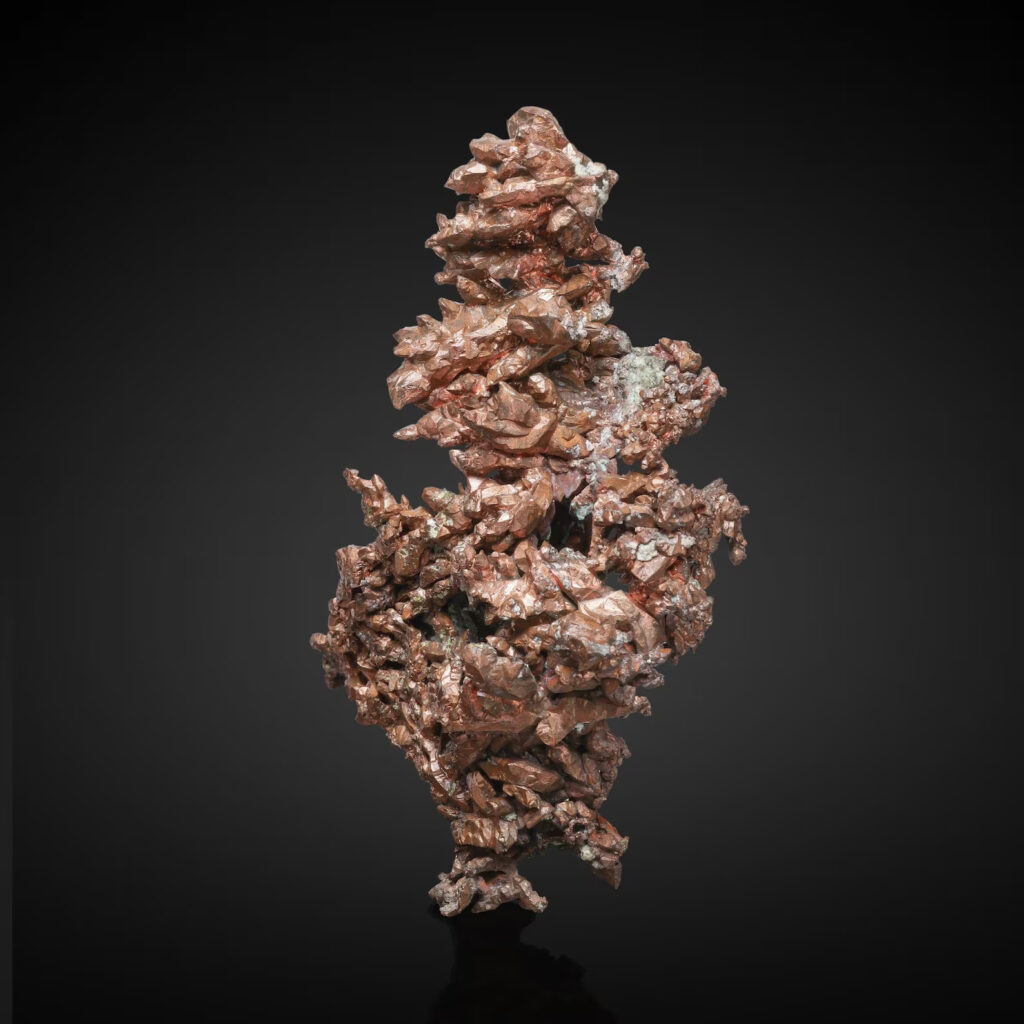
Keep on ridin’
Despite Paul Revere’s better-known place in American history, arguably, this midnight rider’s most significant contribution was to America’s independence from British copper technology. The Royal Navy had perfected the “coppering” technique: covering the hulls of ships with thin sheets of the metal. At sea, the sheathing kept woodworms at bay and formed an oxide coating resistant to barnacles and detritus. The lower maintenance and longer life that resulted promised to double the Navy’s number of seaworthy ships at any given time.
A skilled metalsmith, Revere believed he could learn to roll copper as skillfully as the Brits. With a little help from his son’s industrial espionage mission to England and a federal government loan, Revere renovated an iron mill in Canton, Massachusets and eventually produced copper sheets that rivaled the British product, reducing our dependence on a country we’d be at war with again soon enough.
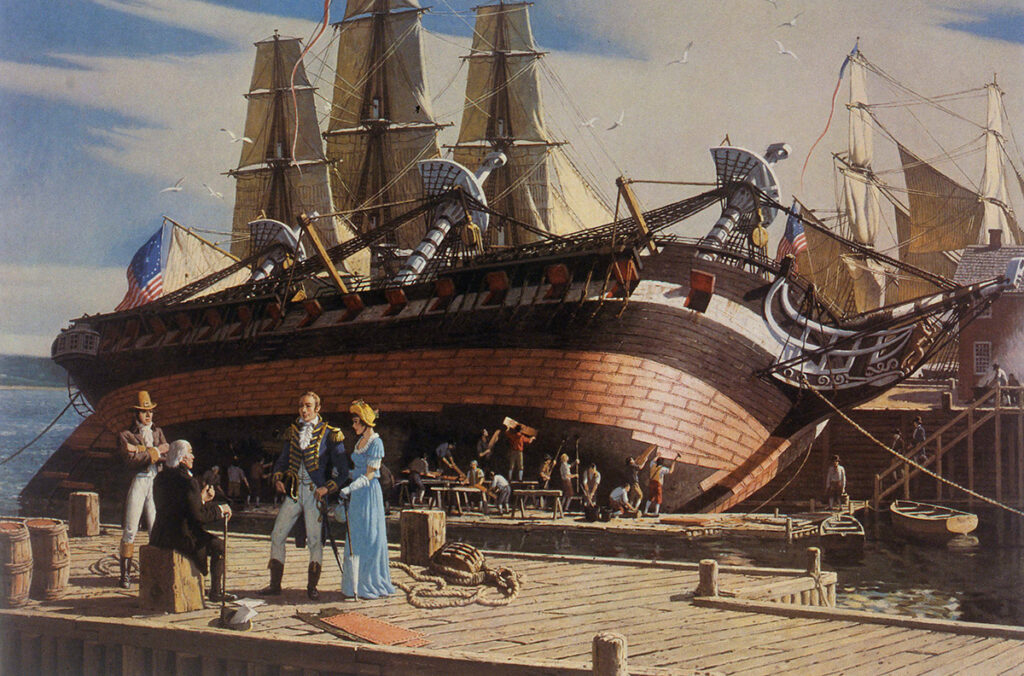
Open for business
At the dawn of the twentieth century, open-pit mining — the process of digging deeper and deeper terraces into the Earth’s surface to extract copper ore — was the next significant advance in copper tech. Enabled by the railroads and powered by the steam engine, open-pit mining centered the industry in Arizona, Utah and New Mexico. Arizona became the nation’s leading producer in 1910 — a title it has held ever since. The copper star at the center of the state flag conveys the industry’s importance. Today, 68% of all US copper comes from Arizona.
More often than is appropriate, when I write marketing copy at my day job, I like to imagine my words in the voice of Burgess Meredith. In 1965, genius adman Lloyd Ritter went beyond imagination to cast the man himself. Do yourself a favor and spend the next 37 minutes watching Copper! Commissioned as a promotional film for the Kennecott Copper Company, the result isn’t an advertisement as much as it is a celebration of life itself. The viewer is compelled to see copper through the eyes of a child as a pair of precocious New Yorkers break the fourth wall and find themselves in one copper caper after the next. A sweeping orchestral score lovingly carries us through this Technicolor dream. You’ll never not think about copper the same way again.
The fix
Perhaps nowhere has the tenuous separation of state and industry been more tenuous than in US copper. When European countries fixed copper prices in an effort to avert profiteering during the Great War, the United States followed suit in 1917. Prices were again fixed during the Second World War. As the 1940s gave way to the 1950s, both government and industry were poised to reap the benefits of American life during peacetime.
Copper enjoyed a free market once again, and the federal government sought out peacetime applications for wartime inventions. The Treasury rebranded War Bonds as Savings Bonds, reframing their benefit from financing the war effort to preserving our collective independence. Surely, they’d find new ways to spend the money we lent them.
The 1949 Savings Bond sales campaign, branded as America’s Opportunity Drive, was a nostalgic nod to the westward migration of 1849. Gronway Parry, the Covered Wagon King, produced 26 of his masterpieces to be used as promotional vehicles. Festooned with the slogan, Be a Modern’ 49’er, the wagons toured hundreds of cities and 30 state capitals to drum up support.
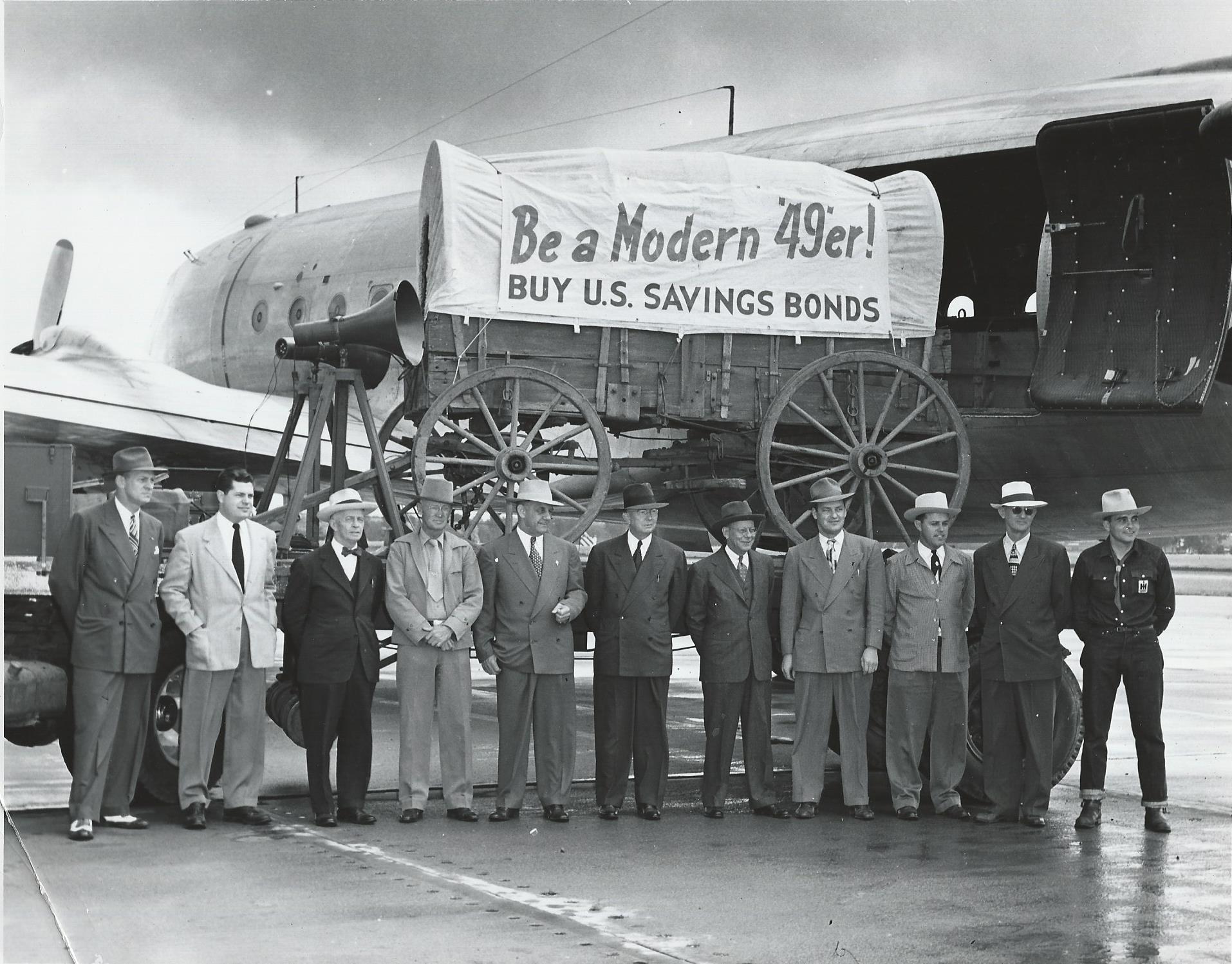
Free market dreams
The Treasury went back to the reliable well of nostalgia the following year. This time, the theme would be Save for Your Independence. Full-size, functional Liberty Bell replicas would tour each state and select territories. Buy a bond. Ring the bell. Save the world.
The US copper cadre was quick to lend its support. Six companies donated the raw materials needed to make what ended up being 57 bells: Anaconda Copper, Phelps-Dodge, American Smelting and Refining Company, the American Metal Company, Miami Copper (of Miami, Arizona) and Kennecott Copper. The American Bridge Company furnished the hardware and frames. The eight companies paid for the bells to be cast at France’s Paccard Foundry. Revere Copper and Brass donated the bell’s accompanying plaques — Paul Revere’s gamble had indeed paid off.
Despite the industry’s patriotic generosity, the federal government once again set a ceiling on US copper prices in 1951 during the Korean War. This time, we acted alone, causing shortages and devaluing domestic production. While price controls lasted only two years, American copper prices would take two decades to catch up to the rest of the world.
The bronze replicas weigh in at 2,080 pounds (the same weight as the O.G. Liberty Bell) and are alloyed of 78% copper and 22% tin. That adds up to 92,477 pounds of copper, worth $23,119 ($280,738 in 2022 dollars). The bells did their patriotic and marketing duty, selling $650 million in Savings Bonds nationwide.
It would be poetic to cast 1950 as the zenith of American copper, with a big bronze bell touring every state — and all the goodwill and free press that comes with such a spectacle — but in 2023, the golden age of copper has only just begun. While the future is not in copper-alloyed plastics, as Kendicott and The Penguin posited, the future is where copper has been for over 200 years: electrification — just a lot more of it. As the world turns away from fossil fuel consumption, the wind turbines and electric cars we’ll ride into a decarbonized future will require much more copper than we currently produce. Even when we factor in recycling, copper demand is projected to exceed supply by 20% (6.5 million metric tons) in the next eight years.
Phoenix rising
The Arizona Liberty Bell holds two unique distinctions: It’s the first replica to be replicated and the only bell to have been loaned to another state during the 1950 drive.
While on holiday in France In 1950, Phoenix cattle baron Phil Tovrea happened upon the Paccard Bell Foundry as they hustled to cast the Treasury bells. He and bellmaker Alfred Paccard became fast friends, and Tovrea ordered his own replica, becoming perhaps the world’s first private citizen to own a Liberty Bell.
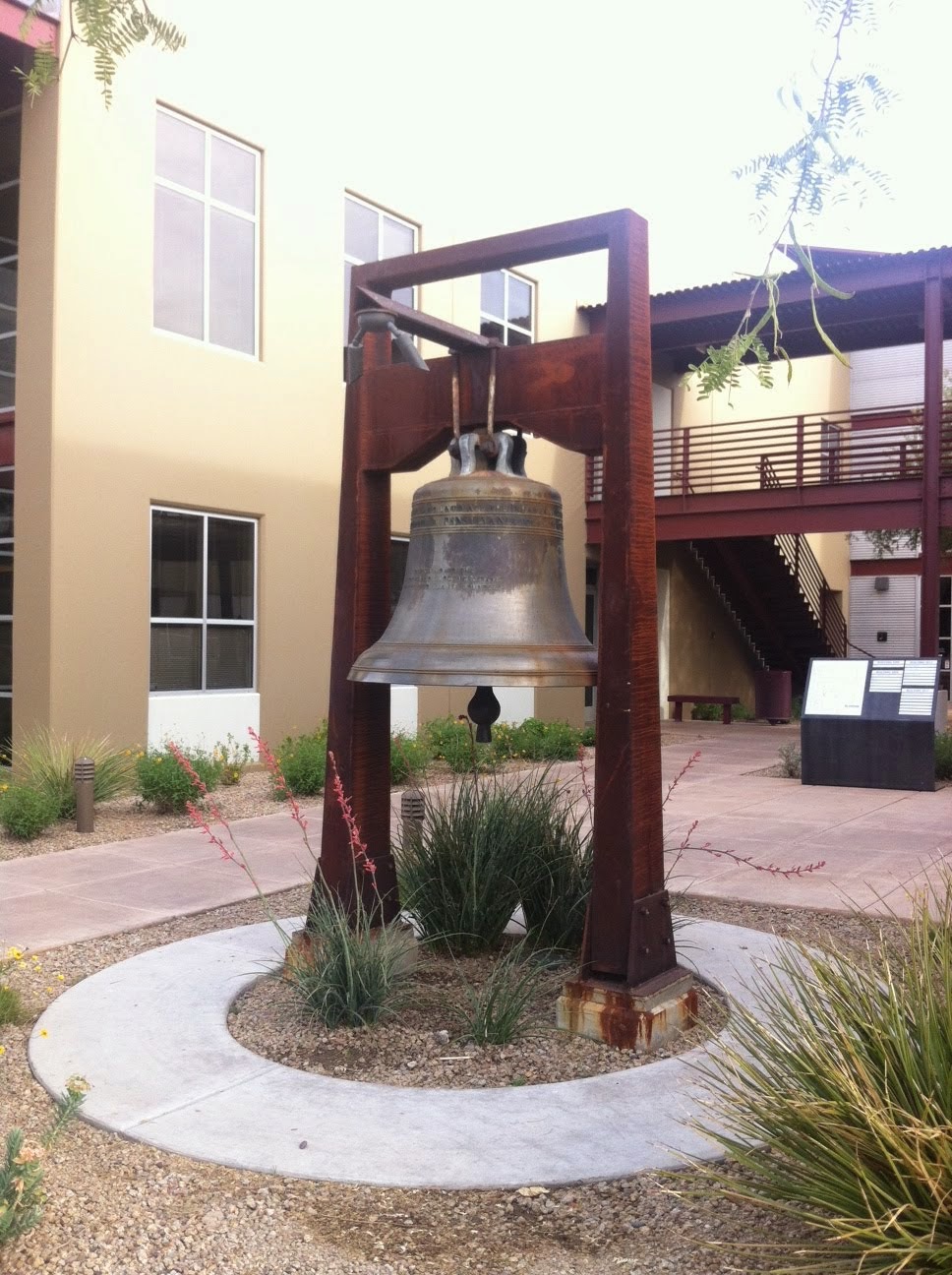
When Paccard came to Independence, Missouri, in October to present Harry Truman’s hometown with its own Liberty Bell, he first stopped in Phoenix to visit Tovrea and tour his business operation.
California stars
California was the second-most-populous state at the time, and next-door neighbor Arizona the thirty-seventh. With two weeks of the 50-day bond drive remaining, Arizona’s bell had already toured the state’s major communities. Governor Dan Edward Garvey took an admirably federalist approach, arguing, “Because of the size of the state, it would be impossible for California’s bell to visit all of the major communities during the short period of the drive. At the request of the Southern California Savings Bonds Committee, we have, therefore, agreed to lend the Arizona bell to our neighbors for the final two weeks of the campaign in order that all Californians will have an opportunity to see one of these impressive replicas.” Apropos of the land of make-believe, the Liberty Bell that rang out for the Los Angeles Independence Day celebration actually belonged to Arizona. So it goes.
The highway of interstate cooperation did run in both directions. When the campaign’s kickoff at Encanto Park in Phoenix was hyped, a Hollywood star was promised to master the ceremonies. Either Vincent Price (the guy from Thriller) or William Holden (the guy who set Lucy’s nose ablaze) would recite the Declaration of Independence. I’m unable to determine who, if either, showed up — but do yourself another favor and pause again to read the entire, surprisingly long, Declaration of Independence in the voice of Vincent Price. You’re welcome.
A short honeymoon
Ceremonies in Tucson on May 20th concluded with Gold Star mother C.T. Sewell ringing the bell in honor of her son, John Edward, killed in action in 1944. The Arizona Liberty Bell paraded through town flanked by a four-man guard and followed by four convertibles carrying Hollywood starlets and other filmdom celebrities. Six B-50 bombers took off from nearby Davis-Monthan airfield to perform a bombastic flyover.
Accompanying the bell throughout Arizona was a handmade silk American flag crafted by Mrs. John W. Thomas.* On Flag Day 1950, Thomas presented a duplicate of her silk flag to Treasury Secretary John W. Snyder at the request of D.C. authorities. Each flag took her 75 hours to complete.
At the conclusion of the bond drive, the bell was put on display in the Capitol Rotunda until a “permanent conspicuous” spot on the Capitol lawn could be found to share it with all Arizonans.
However, six days later, plans changed.
A quick side note: In my irresponsibly deep research on the subject of Liberty Bell replicas, I’ve found there are two types of newspaper reporters. The first group consumes 90% of column inches, documenting details clearly and concisely. I understand their writing as well today as the average American did 70 years ago. You could argue this is how all newspaper reporting should be, and I couldn’t disagree. The second group (I suspect poets, playwrights and screenwriters holding down a day job) requires a little more work and is a lot more fun. One such unnamed reporter recounts the Arizona Liberty Bell’s fate:

Ring Out, Wild Bell, Sheddap!†
ARIZONA’S Liberty Bell was silenced Monday to save wear and tear on Capitol workers’ nerves.
Since it was set down on its massive oaken yoke in the Capitol Rotunda, the curious and the playful have had no end of fun banging its giant clapper.
Every time the bell bonged, office workers almost jumped out of their chairs, and routine was disturbed until the rolling tones died away.
Tom Ison, Capitol custodian, decided something ought to be done about it. He had his building men brace the bell’s big clapper with strips of wood in such a manner it can’t be moved.

It wouldn’t ring again for another 50 years until the alluringly alliterative Constitutional Commemoration Committee borrowed the bell to bong it in their perennial parade.
After a few years of carting it back and forth, local business owner and CCC Chairman Bill Norton decided the bell needed some spiffing up. In 2005, he enlisted Joe Hendel, who owned a neighboring business, to help in restoration efforts. The men determined the replica’s original yoke was cut from slippery elm‡ and searched far and wide before finding the timber at a Minnesota mill. Woodworker Joe Pastore crafted the new yoke, which summarily cracked and was replaced with Mesquite. Hendel and his employees scrubbed the bell clean with toothbrushes. Three years later, it was returned to public display outside the Capitol.
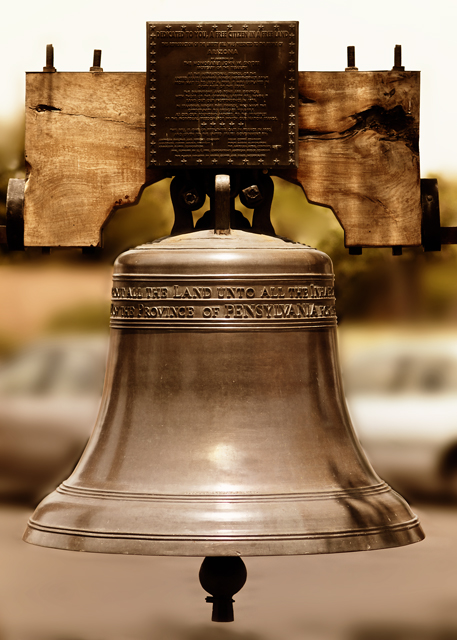
Unsung
The Arizona Liberty Bell, like the copper that gives it its warm tone and complexion, proved as underappreciated as it is invaluable. Upon its return to Phoenix, David Hoober, director of the Arizona Capitol Museum, noted, “It wasn’t until the bell left the Capitol I became aware of how important and popular it was to our visitors, with people coming in asking. ‘Where is the bell?’”
if you believe Burgess Meredith (and who wouldn’t?), copper is life. Copper is liberty. And like liberty, It’s in dwindling supply and high demand. It’s everywhere and nowhere. It’s something we rarely think about and could scarcely go without. It’s never been as valuable as gold, but it’s always been more important.

*As bonkers as it seems today, on the rare occasions women appeared in the newspapers, they were often named as Mrs. (Husband’s first and last name.) Relying on contemporaneous reporting, as I must, inevitably upholds the patriarchy. I’m working to uncover and share the stories of the women involved with these bells. With a few exceptions, these stories are lost to history. But I will keep seeking.
†Ring Out Wild Bells, from the Alfred Lloyd Tennyson poem. Sheddap, as in shut up, as in the stereotypical Italian expression Shedupp-a yo face. There also might be some connection to Danny Kaye’s radio show.
‡Word has it the 57 Treasury replica yokes are made of American Spruce, while the O.G. Liberty Bell’s current yoke is of American Elm.
Arizona Liberty Bell replica
Location: Arizona State Capitol courtyard
1700 W. Washington Street
Phoenix, AZ 85007
Serial Number: 14
Can I ring it? No.
Hours: 24/7 (outdoors)
